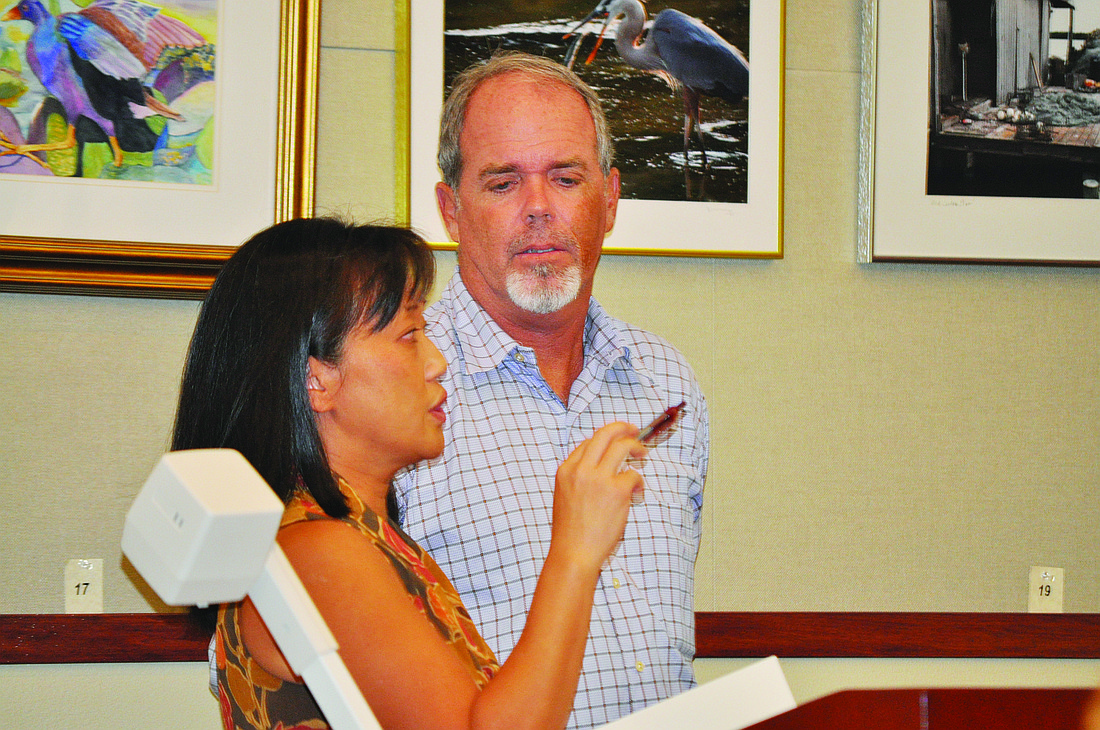- April 19, 2024
-
-
Loading

Loading

The Planning and Zoning Board presented a revised sign code to the Town Commission Tuesday in an attempt to make the code easier to understand. The proposal was met with future revisions and more questions.
When town planner Ric Hartman noted a change was made to allow portable sandwich board signs to be used to advertise community association meetings (which is not currently allowed), Commissioner Phillip Younger noted that Longbeach Village Association uses a handwritten sign to advertise its meetings.
Handwritten signs aren’t allowed under the current code.
“For years, the Village has put out a handwritten sandwich board telling people there is a meeting,”
Commissioner Robert Siekmann said. “And all of a sudden, we couldn’t do that last month. That seems stupid.”
Planning, Zoning and Building Director Monica Simpson told Siekmann it was just brought to the town’s attention a couple months ago that the Village sign was non-compliant.
“What’s the prejudice with handwritten signs?” Siekmann asked.
The commission eventually achieved a consensus to allow handwritten signs for community and neighborhood meetings.
Commissioners then got into a debate about potential height changes for signs, prompting a debate on how much time those with non-conforming signs would have to correct the signs.
Planning and Zoning Board members, speaking from the audience, were also involved in the debate, which prompted other members of the audience to offer suggestions, including resident Madelyn Spoll.
The comment prompted Mayor George Spoll to jokingly respond: “I don’t need direction from my wife from the audience, thank you.”
The comment prompted Madelyn Spoll to ask, “Are you sure?”
Debates over font lettering on awnings and sign height and width also ensued.
Despite the confusion and back-and-forth discussion, the sign code could be headed toward a revised adoption on first and second readings.
Changes suggested by the commission were presented to town staff, and the code will come back for further review and first reading at the commission’s Monday, Nov. 1 regular meeting.
The sign-code saga began more than a year ago.
In April 2009, the Town Commission took issue with its planning board’s wish to review the sign code and hold public hearings after a town election and issues about non-compliant real-estate signs were raised.
But in May 2009, the commission allowed the planning board to hold public hearings and make recommendations.
Residents, real-estate agents and business owners came to the podium in May 2009 to express their views on the code, which was scrutinized when town officials took campaign signs from the rights of way and forced real-estate signs to be pushed back on certain properties, per town code requirements.
Suggested sign code changes
• Restrict neon lights.
• Clarify the regulation of flying flags to be sure the term “national flag” clearly states an allowance for the U.S. flag, as well as others.
• Political signs should be up 45 days prior to an election and removed within 72 hours after the election.
• Temporary signs are to be placed no closer than two feet inside the property line on rights of way that are less than 50 feet in width.
• Increasing the amount of time banners may be displayed after the conclusion of a special event from 24 hours to 72 hours and.
• Removing a requirement that a banner’s message or logo shall not be visible from a public or private right of way or from an adjoining property.
• Changing the size allowed for construction signs for residential construction on buildings of less than 10 units or on individual dwelling units within a multi-family building from 4 square feet to 8 square feet.
• Changing the method for determining the maximum size of a sign and sign structure, basing it on a property’s length of street frontage.
• Retaining the 8-foot height limit on single tenant signs, but changing the 8-foot height to 12 feet for multi-tenant properties and for residential or tourism developments.
• Allow one 6-inch-high rider on a permanent sign with the rider’s square footage included in the calculation of an overall sign area.
• Not limiting the types of messages displayed on changeable copy signs, but requiring the font and size of the copy be consistent.
Contact Kurt Schultheis at [email protected].